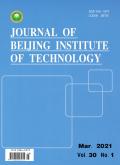Research on Drag Torque Prediction Model for the Wet Clutches
Q4 Engineering
Journal of Beijing Institute of Technology (English Edition)
Pub Date : 2008-12-01
DOI:10.3901/CJME.2009.02.238
引用次数: 24
Abstract
Considering the surface tension effect and centrifugal effect, a mathematical model based on Reynolds equation for predicting the drag torque of disengage wet clutches is presented. The model indicates that the equivalent radius is a function of clutch speed and flow rate. The drag torque achieves its peak at a critical speed. Above this speed, drag torque drops due to the shrinking of the oil film. The model also points out that viscosity and flow rate effects on drag torque. Experimental results indicate that the model is reason-able and it performs well for predicting the drag torque peak.湿式离合器拖动力矩预测模型研究
考虑表面张力效应和离心效应,建立了基于雷诺方程的湿式离合器拖拽力矩预测数学模型。该模型表明,等效半径是离合器转速和流量的函数。阻力扭矩在临界速度下达到峰值。在此速度以上,由于油膜的收缩,拖动扭矩下降。该模型还指出了粘度和流量对阻力转矩的影响。实验结果表明,该模型是合理的,能较好地预测阻力力矩峰值。
本文章由计算机程序翻译,如有差异,请以英文原文为准。
求助全文
约1分钟内获得全文
求助全文
来源期刊

Journal of Beijing Institute of Technology (English Edition)
Engineering-Engineering (all)
CiteScore
1.10
自引率
0.00%
发文量
2437
 求助内容:
求助内容: 应助结果提醒方式:
应助结果提醒方式:


